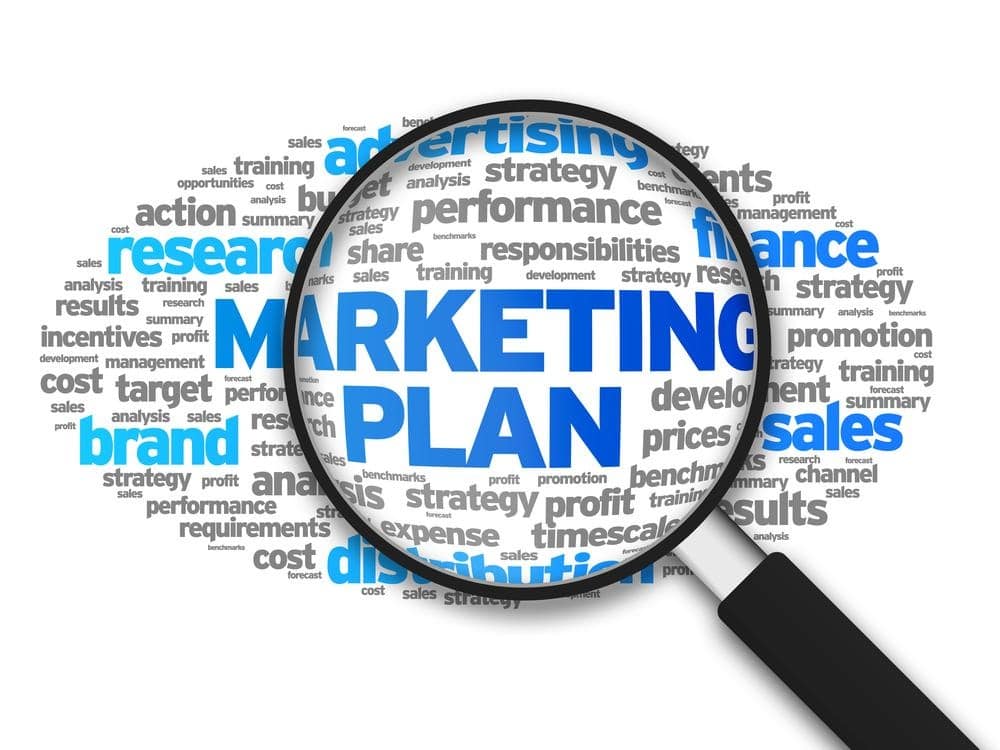Getting your marketing right is not always easy, especially if your plan doesn’t support your marketing activities. So before posting on social media, blogging, or creating marketing materials or ads, start by creating a marketing strategy to meet your business needs. Then, use your strategy to support your marketing plan and efforts. Setting marketing standards is the only way to accomplish scalable growth in the coming months and years – it’s never too early to start setting your business goals for the next quarter or the following month. So, what are a marketing strategy and marketing plan, and what is the difference between them?
How is a Marketing Plan Different from a Marketing Strategy?
The primary distinction between a marketing strategy and marketing plan is your strategy is the “why” behind your efforts. In contrast, your plan is how you intend to carry out your strategy.
Your business’s marketing plan serves as a road map, clearly outlining the plan for your marketing efforts. In contrast, your strategy provides the overall justification for how your marketing activities will support you in reaching your business goals.

What Exactly is a Marketing Plan?
A marketing plan outlines the measures you’ll take to achieve the business’s or a specific campaign’s defined marketing goals or overarching strategy. Marketing plans concentrate on tactics and strategy-implementation activities that will assist your business in meeting its goals. Creating a marketing strategy is the first stage in creating a marketing plan. Then, you’ll write a thorough plan outlining the what, when, how, and where of your execution and how you’ll subsequently assess the effectiveness of your marketing strategy.
Measuring the success of a marketing plan is an essential component of it. Key performance indicators (KPIs) are achievement indices you’ve set up to monitor where you stand in accomplishing your objective. Once you’ve established your KPIs, you can create a more robust marketing plan that corresponds with the entire strategy and evaluate your success. Organic traffic to your website, sales income, conversion rates on your landing page, and cost per lead or cost per click are all examples of KPIs.
Here are some other things to think about including in your marketing plan:
Branding: Part of your marketing plan should include establishing how you will brand your business, including your brand voice, colors, typefaces, and other elements. Ensure these branding aspects are visible on your printed materials, website, social media channels, emails, blog posts, shop signage, and print ads.
Schedule and budget: When developing a marketing plan for your business or a campaign, it is critical to include information regarding the campaign’s schedule and budget. This guarantees that you stay on schedule and within budget throughout the campaign, whether to raise brand recognition or sell more units of a particular product.
Responsibilities: A marketing plan frequently requires the assistance of multiple persons with significant responsibilities. As a result, a marketing plan should specify who is in charge of which aspects of the campaign or plan’s implementation. For example, consider who is creating visuals, producing material, distributing it across multiple channels, and tracking KPIs.
Content Strategy: A content strategy might include information about when and how often to disseminate content to the target audience, how you plan to engage with them, and any incentives you want to offer for interactions.
Channels of Communication: You will choose the communication channels to engage your target audience in your marketing plan. You must organize your marketing based on the channels, as the communication style on each channel may differ. Your communication channels may include blog posts, podcasts, social media channels, email, and other common mediums.

What Exactly is a Marketing Strategy?
A marketing strategy serves as the framework for what the business needs to engage and connect itself with the target audience and achieve its objectives.
Here are some things to consider while creating your marketing strategy:
Goals: Be informed of the organization’s goals so that you may model both short- and long-term marketing goals after them. Goals are vital to set and assess whether you’re working on a strategy for a single marketing campaign or overarching messaging for your organization or client.
Competitors: When developing your marketing strategy, you should also examine who your competitors are. Competition analysis will assist you in determining who your rivals are, what they offer their clients, their market positioning, their strengths, and their weaknesses.
Target Audience: Before creating a product, devising a marketing strategy, or seeking investors, you must have a thorough grasp of your target demographic. Learn about the people you want to target with your marketing strategy, motivations, goals, needs, difficulties, and the factors they weigh before making a purchase.
Messaging: Develop and distribute your messaging with internal staff, stakeholders, and external customers as part of your marketing strategy. Take into account the tone you wish to adopt and any jargon. Consider the feelings you want to portray and how you want individuals hearing the message to feel.
Value proposition: Your unique value proposition distinguishes you from the competition. Your marketing strategy should include identifying what differentiates you from competitors and being able to share this with consumers. Hence, they know why they should consider purchasing from you rather than another business.

Crucial Characteristics of Successful Marketing Strategies
Successful marketing strategies have four crucial characteristics:
Create Buyer Personas: Create buyer personas and categorize your target audience based on industry, geographical area, revenue level, company size, business demands, and final ambitions. Gather valuable insights from your sales data and website analytics. Don’t hesitate to contact current clients to inquire about their purchasing experience and general requirements; they’ll likely enjoy the customized attention.
Once you’ve determined your clients and prospects, tailor your marketing plan to each group’s specific needs and objectives.
Dynamic: A strategy is not set in stone (but should be documented on paper!). The most significant benefit of having a well-thought-out plan is the ability to quickly identify things that are not working, allowing you to replace what is not working with better, more successful ideas.
Data-Informed: A marketing strategy is more than a set of business assumptions. It should be driven by data analysis, previous results appraisal, and future patterns consideration. Once all factors have been appropriately assessed, a data-driven plan allows marketers to take prudent risks.
Scalability: Scalability entails a strategy’s ability to absorb higher budget inputs to deliver the intended effect on a much larger scale. Consider a strategy to be a machine: the path you take for a 40% increase in leads should also apply to a 200 percent increase without causing major logistical issues.

Do Your Research When Developing Your Marketing Strategy
When developing and implementing your marketing strategy, keep your goals in mind. However, before you dive in, consider what you’ve previously tried. What worked, what didn’t, what exceeded expectations, and what fell short? This is where evaluating the data you have accessible comes into play, allowing you to make more educated market forecasts in the future.
Planning your new strategy also entails researching your competitors. First, examine how they conduct their marketing activities. Subscribe to their newsletters and follow them on social media to better understand their strategy and how they target potential clients. Understanding what your rivals are investing in can help you better understand the industry and what will work best for your company. Next, consider seeking a digital health check from a marketing professional to assess your existing online performance and identify areas for improvement.
Examine your current customer list as well as those you’re targeting. There are substantial differences between them; clients and potential clients have different wants and goals and will be at different phases of the purchasing experience. So why would you use the same marketing strategy for them all?
Not sure where to begin
Creating a plan that checks all the boxes is difficult, especially if you’ve never done it before. To keep ahead of the competition, you must develop a well-thought-out marketing plan and marketing strategy targeted to your business needs. In addition, maintaining the discipline to stick with your strategy and work your plan can be complex. Understanding your online presence will assist you in determining what you truly need from a digital marketing strategy. Secured Logics has worked with some of the top companies in the US, and we’re here to help you with your unique marketing needs. Contact our team to speak with an expert today.

